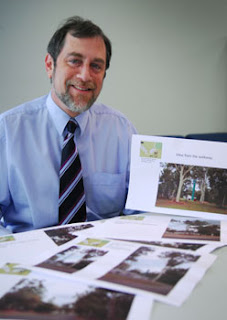"The drop capsule is brought to rest on an inflated airbag that allows the experiment to be slowed down and readied for another drop. Scientists are able to analyse the result when the drop is completed," Professor Steinberg said.
He said the microgravity tower would be an attractive, cheap alternative to the usual methods of zero-gravity testing.
"To do this type of research without a microgravity tower is often extremely expensive and time-consuming because researchers have to send their experiment into space on a space shuttle or use a 'vomit comet', a NASA jet that changes altitude rapidly, to negate gravity's effects," he said.
"Researchers can pay huge fees to run an experiment that weighs just several kilograms in the space shuttle whereas the QUT facility will cost far less per drop. We can also perform many drops per day and the experimental system being used can weigh hundreds of kilograms and be quite large."
Professor Steinberg said reduced-gravity testing could give scientists insights into phenomena not able to be studied in normal gravity since the effects of buoyancy, sedimentation and other convective disturbances are not present in gravity.
"For example, it has been demonstrated that the formation of certain silica nanomaterials is greatly enhanced when it occurs in reduced gravity leading to better materials and that the solidification of metals in reduced-gravity environments produces stronger structures than are formed in normal gravity."
Contact: Ted Steinberg t.steinberg@qut.edu.au On the web Queensland University of Technology
Media contact: Niki Widdowson, QUT media contact, 07 3138 1841 or n.widdowson@qut.edu.au.
Technorati Tags: nano or Nanotech and Nanotechnology or microgravity tower and reduced-gravity environments or Queensland University of Technology and UCLA researchers develop new nanomaterials to deliver anti-cancer drugs to cells or This Day in History Benjamin Franklin flys a kite and Friday the 13th, 2029 Asteroid 2004 MN4 PODCAST















1 comment:
http://www.uq.edu.au/news/index.html?article=1622
Post a Comment